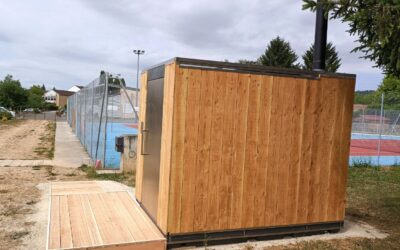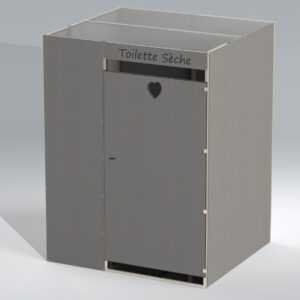The question is often asked: should you treat the wood of your dry toilets?
From an Aesthetic Perspective:
Untreated poplar wood, like many other types of wood, turns silver-gray over time. It undergoes non-uniform changes in the first two or three years and then evens out over time.
To delay this graying, you can apply a wood saturator that penetrates the wood without leaving a surface layer. However, time will eventually wear down this treatment if it is not regularly renewed.
In our opinion, varnishes should be avoided because they leave a superficial layer that chips as it ages, requiring significant preparation work when renewing the treatment.
These varnishes, although microporous, trap ambient moisture and limit the wood’s ability to breathe (e.g., the lower parts of lace-like shutters after a few years).
Coloration is possible.
We recommend the application of an ecological paint without solvents, as described in our article. Very resistant and breathable, with excellent coverage, it does not require any prior work when renewed.
This paint will give a beautiful appearance to the cabin and is also healthier for you!
You can also find eco-friendly and highly breathable paints in stores, certified with the “PURE” label.
From a Longevity Perspective:
Based on our extensive experience, there is no difference between treated and untreated wood, except for health and environmental considerations.
The choice of wood type and its intended use take precedence over treatment. Poplar is naturally repellent, and it is very rare for pests to infest it, especially if the toilets are used regularly.
Our cabins are designed to naturally withstand the test of time.
The non-jointed floor of the cabin, as well as the openings at the bottom and top of the door, contribute to natural ventilation.
The part of the cabin resting on natural ground consists of red Douglas fir joists, which are resistant to moisture.
To further increase its longevity, it is advisable to follow a few rules when choosing its location.
The cabin should be regularly exposed to sunlight and oriented with its back to the prevailing winds. It is preferable that the base be made of draining materials (concrete retains moisture).
Following these recommendations, our first dry toilets are over 20 years old and still function perfectly.


















